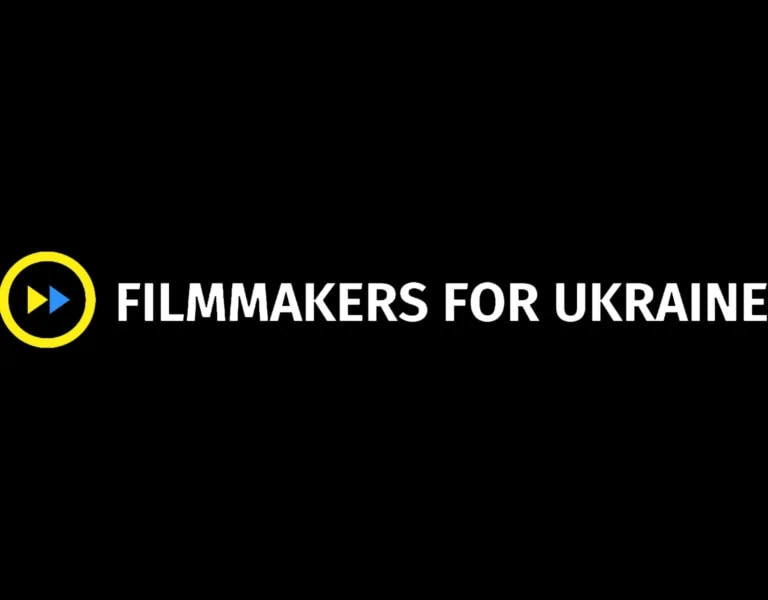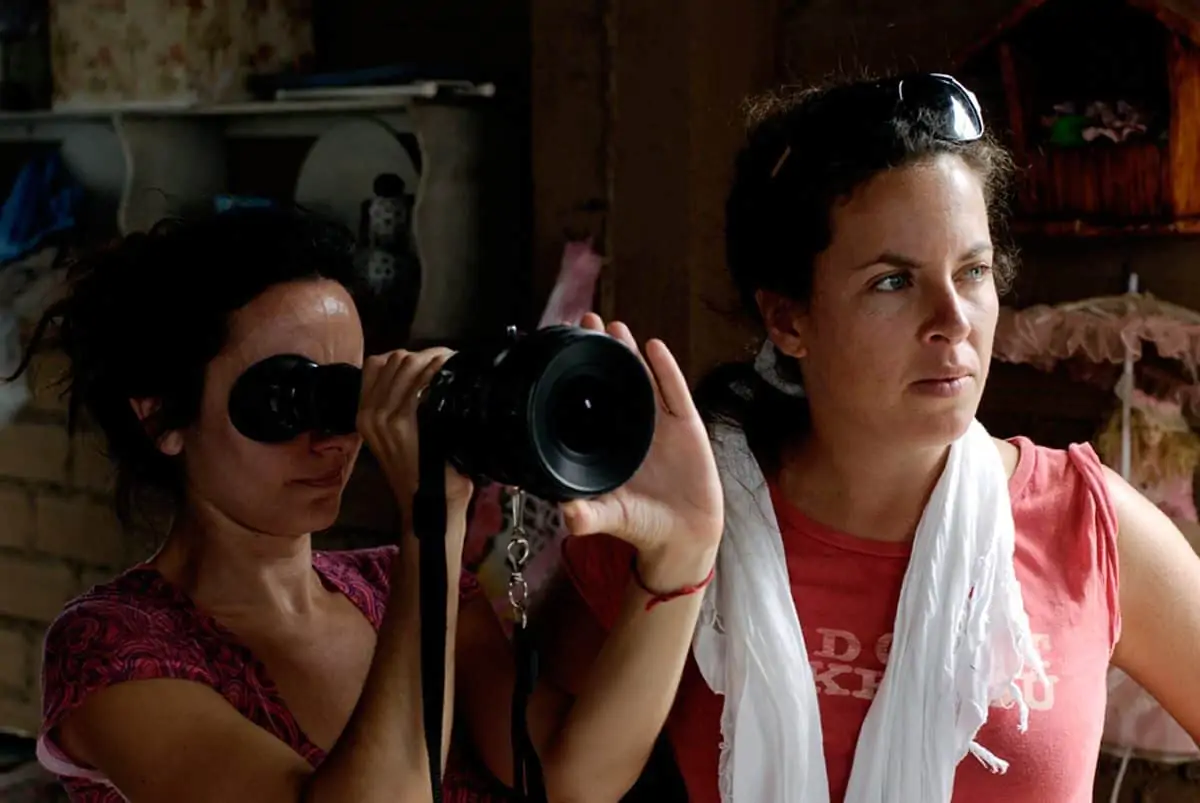CAUGHT IN THE ACT
Cinematographer Witold Stok BSC explores the fascinating relationship between those in front of and behind the camera, drawing on his own experiences on set.
“I think acting – and particularly feature film performance, because of its subtlety – is really an instinctive thing. I think you can either do the gig or you can’t. But given that statement, there are things you need to learn, and that is about your relationship with the camera and how to maximise that relationship.” – Russell Crowe
The film set is a cruel place. At times, filmmakers treat actors appallingly, expecting true-to-reality, spontaneous performances yet disciplined in a ridiculous mangle of set routines: hit the floor marks while not appearing to look down, take your route in blind orientation from the surrounding furniture while counting your steps, please. Also, ‘do a banana’: walk in a curve so as not to block the other artist for the camera but appear to walk in a straight line. Cheat eyelines for the editing, even though losing direct eye contact with your acting partner might stun the performance. And yet, keep delivering your lines ‘naturally’ as if conceived off-the-cuff. No pressure…
Actors are never sure whether it will all come out. The director has to look into their eyes and mitigate the stress, empathise with and coax them to find the courage to perform all they had thought impossible. With trust, you suspend the fear of making mistakes.
David Lean’s wife, Ann Todd, the star of his early The Passionate Friends and Madeleine films, remembered its director of photography: “A good cameraman like Guy Green [OBE BSC] goes into you and the parts you are playing. If he saw a certain expression of mine in the rehearsal, he would tell David how he could bring it out by changing the camera angle or something.” The BSC man himself humbly said: “What was exciting about the black and white photography was making the actors come out of it stereoscopically. I played the dark against the light all the time.”
Some directors invite cinematographers to actors’ rehearsals, while others guard it as their private space. I jump at the precious chance to witness the organic rhythms of acting being born, awakening my instincts to the scene’s visual essence and the fresh opportunities the set environment offers. As the director and actors affirm the meaning of the scene and its place in the story, I pick up the emotional temperature, tuning lighting mood to performances. Acting energy informs crucial visual decisions that transcend the simple functionality of workable lighting and camera movement. How a scene is blocked and broken into set-ups grows from performances, where the artists are physically on the set at key points. We need to find the best angle for the scene. A free-feeling environment puts an actor at ease and enriches their parts. I don’t believe cinematographers are always overjoyed, in every film, to shoot with multi-cameras. But more editing choices and a chance to capture actors’ best performances in more sizes ignites the chemistry between the characters.
KEEPING ENERGY HIGH
In the ‘70s, I lit my first features in large brush strokes. The big studios’ precise glamour lighting felt outdated.
Nowadays, I think less about how to light the set. I place key lights with the true-to-location logic of real light sources and consider necessary angles to cover. To give as much freedom as possible to the performances, we rig lighting for the whole scene rather than for separate setups and minimise the fuss of tweaking between the set-ups. It’s essential to not let the instinctive performers’ momentum seep away, to keep the temperature of the scene raised and reduce pressure.
While actors are being made-up and practise their lines, we finish the lighting and technically rehearse the tracking shots with their body substitutes. Yet, much useful as the stand-ins are, they only take us so far. Actors are cast for a reason; the instant they step in, in an inexplicable act of confidence, the light clings to them, even though seconds ago it didn’t seem so convincing on the stand-ins. In a wondrous phenomenon of photogenicity the camera sees in the performer a lot more than appears to the naked eye.
I watched Max Wall, the old-time master clown, in my first English drama series, based on Percy Shelley’s Zastrozzi. He was nearing his 80s, hands gnarled by arthritis, but in front of the camera the vaudeville legend shed decades with the flick of a sublimely defiant clowning gesture. His extraordinary arthritic-prancing movements instantly reignited the enchanted slapstick world of Buster Keaton’s silent movies. To raise his act, Wall timed his coming to the set like an entrance onto the stage. His gin-guzzling priest, Oliver, danced in the air, in purposely too-short trousers which showed off the bee-like yellow-black stripes of his socks. He turned the set into a circus arena, all to entertain the crew – his first live audience. At a take’s end, almost ready to bow, he scanned the faces of the camera crew fishing for applause. Conspiring with the wonderful clown, we clapped after good takes.
Robert Stephens, the old theatre fox, treated our camera line-ups in Century like live rehearsals in front of a stage audience, acting for the reactions of people behind the lens. The limelight huggers with years of stage experience want to be seen, find their light in an eyewink and follow it like led by radar. If I sharpen the contrast with an over-exposed splash of light onto a background yet want to keep the actor in a correct shadow exposure, I need to reveal my game, or they might instinctively search for the spotlight.
Lonely players in front of the camera may come to the operator or DP and ask what’s happening. Even the greatest naturals can freeze up in awkward situations, like nude scenes. A touch of diplomacy, courtesy and humility are needed, while you defer to the director’s final say. Even minor tunings-in of the movement within the shot can make a winning difference.
WORKING WITH THE BEST
The best actors know how to precisely tailor performance to what the particular lens sees, and it’s a delight. Charles Dance would come to me on the Century set and discreetly enquire about the focal size: “50 or 35? 50 – am I right, Witold?’ he would ask. “It is 50mm, sir,” I’d say. “I thought so, thank you.” He had seen Hidden City, our previous movie, and a trusting connection developed during our second picture together.
To make less experienced actors comfortable, you explain the more complex camera-actor choreography, what the light is doing, how to contain and gear their movements to the different frame sizes, what a lens angle might do to their body action.
In an interview with Polish newspaper Rzeczpospolita upon receiving the EnergaCAMERIMAGE FF Krzysztof Kieślowski Award for the sensitivity in acting in 2005, Ralph Fiennes was asked: “Who is the cinematographer for you: friend or enemy with whom one has to fight for every line on your face?”
“When I worked on my first film, the cinematographer told me: ‘Remember, you always have to get light on your face. Otherwise, your eyes will disappear on the screen.’ This is the only thing I ask now of the people behind the camera,” Fiennes replied.
That is how he recalled our conversation, years later. What I think I said then was: “Feel the light, feel it on your face, on your skin, and then what is most important on the screen will be there, the eyes.” The camera crew – camera operator Rodrigo Gutierrez, focus-puller Nick Lowin, and gaffer Larry Prinz – chipped in to help Fiennes’ steps on the film set; only his second time before a film camera, and a first as protagonist. Previously, he had been in only one brief yet memorable episode of TV’s Prime Suspect. The same director cast him here again, as Lawrence post-Arabia. It was apparent how the camera loved his concentration and the depth of his intelligent, sky-blue eyes. Seeing our film, Steven Spielberg cast him straight away as Amon Goeth in Schindler’s List. The Best Supporting Actor BAFTA Award and the Oscar nomination followed. He had arrived.
COMPLEX COLLABORATION
Most actors dream of as many close ups as possible as their strongest weapon; yet, for some, it is an ordeal. Carey Mulligan said: “The closer a camera gets to me, the worse I am at acting, it completely throws me.” She stressed in interviews how much it freezes her: “Now I’m doing The Great Gatsby and these 3D cameras are here [points to the sides of her face], and it takes me, like, 15 takes. And sometimes I catch my reflection in the camera and then – I don’t know,” she told The Hollywood Reporter in 2014.
In an intimate moment just before a take, actors lean over close to the camera lens – probably for a last check in the glass filter’s reflection of a glued moustache or a strayed lock, a gesture which also subconsciously tames the camera crew’s wild tribe, as a band of brothers in crime. They take us up on the ride, embracing us as accomplices in creating the illusionary adventure. It is vital actors know there is an ally behind the camera. After a particularly touching scene, I may make a point, with directors’ consent, of whispering “That was great.” A well-timed wink may affirm the connection.
The camera as a friend, a lover, an understanding confessor, weeps with a crying character and brightens with the arrival of his smile. I might skew the visuals, use an awkward composition, mute the colours, dull the light, or sharpen contrast across the face to ease the audience into the character’s emotionally skewed inner world. Or, play on a dissonance between the mood of environment and character’s emotion. In a modern-ironic counterpoint to melodramatic cliché, the set, colour and light in discord with the character’s feelings, might work as a powerful dramatic device. The sun streams happily into the room, fresh flowers bounce vibrantly with colours, as the protagonist selects a razor blade to slash his wrists.
“Cinema is light. There, I explore a part of the shadow, I stay behind the screen, I reveal a little of what happens before the lights come up,” Catherine Deneuve once said. It’s all about screen presence. Sharing the magic of their craft in front of the camera, actors are central to the filmmaking endeavour; it’s vital to be aware of the strings that animate their screen impact. How to use the body, play movement and stillness, project voice and create pauses, how to concentrate and build the character. Lighting actors is fascinating and watching the best of them is a thrill. Without this human element, there would be no movies as we know them. It’s what sculptors call ‘the truth of the material’.


















